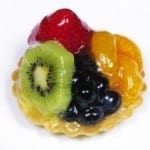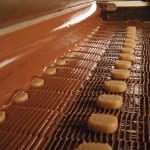Assessing Cling and Coating Stability for Food Coatings and Glazes
The “coatability” and drainage behaviour of food glazes, sauces and dressings is a crucial characteristic for the visual and sensory appeal of the finished product. The requirements are not trivial, however, with a range of behaviours proving desirable depending on the product and its intended presentation.
The term most-commonly used for describing the coating performance of a product is “cling”. Cling refers to the ability for a material to form a stable film over a food substrate, without either detaching, slipping off or draining excessively. These are all critical quality attribute for sauces, gravies, dips and dressings. These are all examples of structured liquids, materia ls that act as elastic solids (i.e gels) under some circumstances and free flowing liquids under others. Whilst viscosity testing of these products is commonplace the “structured” bit – the elastic soft-solid behaviour – is often overlooked completely.
ls that act as elastic solids (i.e gels) under some circumstances and free flowing liquids under others. Whilst viscosity testing of these products is commonplace the “structured” bit – the elastic soft-solid behaviour – is often overlooked completely.
Cling is the result of a combination of rheological contributions:
- Yield stress: The stress that must be applied to a structured liquid in order to induce significant flow. A coating with a high yield stress will drain to a lesser extent, resulting in a higher final coat weight, than one with a low yield stress.

- Zero-Shear Viscosity: The effective viscosity in and at-rest condition, zero-shear viscosity determines the speed at which creep flow, sagging and slumping processes will occur.
- Film-formation: The viscoelastic nature of a coating will contribute to the ability for it to form a stable film across a surface. For example high molecular-weight linear polymers in solution will increase viscoelasticity and extensional viscosity, contributing to the formation of a “stretchy” film that coats yet maintains lubricity.

On a production line the coating will undergo a certain amount of
shearing as it is applied onto the substrate through a process such as spraying, dip or curtain-coating. Two key rheological parameters are of particular relevance here:
- Viscosity: As the products coated are typically non-Newtonian, shear-thinning materials, viscosity is not a single number, rather it is dependent upon the rate of shear applied at any one time. It is therefore important to measure viscosity at these relevant shear rates to ensure relevance to the process.
- Thixotropic recovery rate: Once the coating is applied to the substrate it will undergo a recovery in viscosity and yield stress. The rate that this process proceeds at is known as the thixotropic recovery rate; a slow recovery rate means the sample’s viscosity remains low for longer, promoting further drainage and an ultimately lower coating weight.
In our rheology lab we have a suite of rheological and physical testing approaches that can illuminate the product developer looking to achieve optimum cling properties in their products.

We can:
- Test your formulations and recipes for the rheological contributors to cling.
- Perform the same characterisations on competitor products.
- Perform testing on incoming raw materials and intermediates to identify factors that may compromise cling.
If you would like to learn more about our services please don’t hesitate to get in touch.
